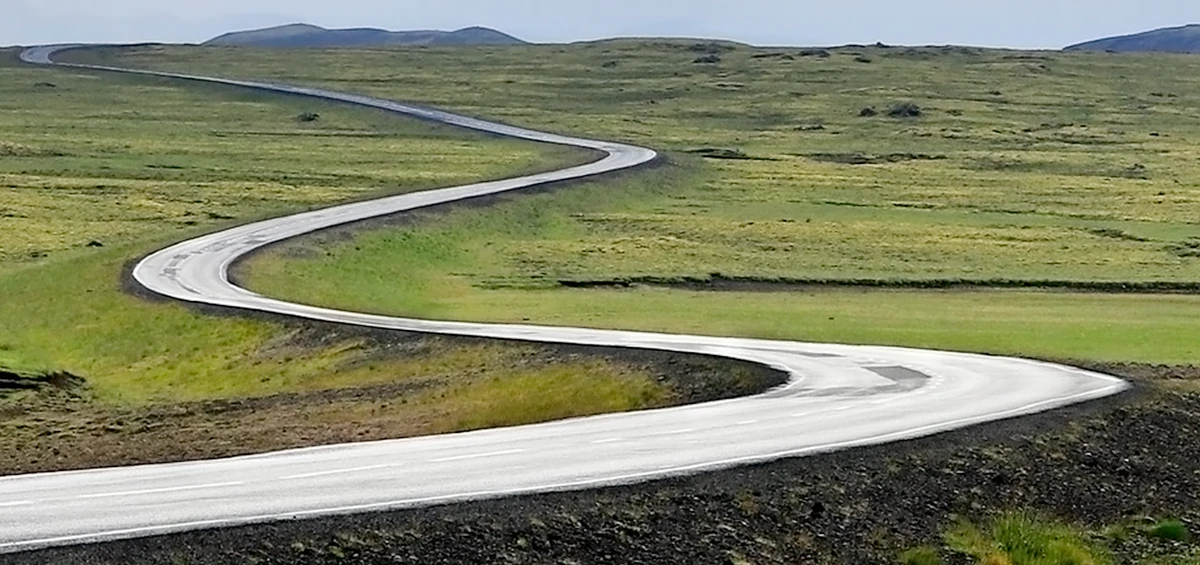When it is required to raise the grade line of a highway above the existing ground level it becomes necessary to construct embankments. The grade line may be raised due to any of the following reasons:
- to keep the subgrade above the high ground water table
- to prevent damage to pavement due to surface water and capillary water
- to maintain the design standards of the highway with respect to the vertical alignment.

Design Element of Embankment
The design elements in highway embankments are:
- Height
- Fill materials
- Settlement
- Stability of foundation
- Stability of slop
Height of Embankment
The elevation of the embankment is determined by the preferred highway grade line and the characteristics of the soil profile or the topographical features. Additionally, the height of the fill may be influenced by the stability of the foundation, especially when the underlying soil is not strong.
Fill Materials
Granular soil is generally preferred as highway embankment material. Silts and clays are considered less desirable. Organic soils, particularly peat are unsuitable. The best of the soils available locally is often selected with a view to keep the lead and lift as low as possible. At times light-weight fill material like cinder may be used to reduce the weight when foundation soil is weak.
Settlement
The settlement of an embankment can occur following construction, and it may result from either the consolidation and settling of the foundation, the settling of the fill material, or a combination of both factors. When the embankment’s foundation comprises compressible soil with a high moisture content, consolidation can take place due to an increase in load. Conversely, inadequate compaction during the fill material’s construction can lead to settlement, which can be significantly minimized through proper compaction. Regardless of the type of settlement, it is crucial for it to be nearly complete before the construction of the pavement surface.
To expedite the consolidation process in saturated foundation clay, vertical sand drains are sometimes employed. These drains consist of vertical columns of sand strategically placed within the compressible foundation, such as marshy soils. Their purpose is to reduce drainage paths and, in turn, accelerate the rate of consolidation. Typically, these vertical sand columns have diameters ranging from 30 to 60 cm and are spaced 2.5 to 6 meters apart in a hexagonal pattern. At the base of these drains, a horizontal sand blanket, approximately 40 to 60 cm thick, is installed, extending across the entire width of the embankment. This configuration facilitates efficient water drainage, aiding in the consolidation process.
Stability of Foundation
When the foundation of the embankment includes a layer of weak soil either directly underneath it or at a specific depth below, such as a weak stratum, it becomes imperative to assess the foundation’s stability to prevent potential failures. This becomes especially critical when dealing with tall embankments. The assessment of foundation stability and the estimation of the factor of safety can be carried out using one of the following approaches:
- Analyzing a specific failure surface, whether it’s a circular arc or another composite shape, can be achieved through the application of Swedish circular arc analysis for wedges, depending on the situation at hand.
- To determine the average shear strength and strength characteristics of the foundation layers, approximate methods are employed. These methods allow for the estimation of the factor of safety.
- Additionally, theoretical analysis grounded in elastic theory is used to assess and predict the stability of the structure or embankment under consideration. This comprehensive approach allows for a thorough evaluation of the system’s safety and structural integrity, taking into account various factors and potential failure modes.
In instances involving a compressible soil foundation, the factor of safety is expected to be at its lowest immediately after the embankment’s construction is finished. Over time, as the foundation undergoes consolidation and gains strength, there will be a subsequent rise in the factor of safety. Consequently, it becomes apparent that in these compressible foundation soils, vertical sand drains can play a beneficial role in expediting the rate at which strength is gained. Through the careful design and implementation of vertical sand drains, it is feasible to restrain the reduction in the foundation factor of safety during construction, ensuring it remains within acceptable limits.
Stability of Slopes
The slopes of the embankment must possess sufficient stability to prevent any risk of failure, especially when subjected to unfavourable moisture and other environmental conditions. Therefore, it is essential to assess and ensure the stability of the slope or design it with a minimum factor of safety of 1.5. In many cases, shallower slopes are favoured for highway embankments due to aesthetics and various other considerations.
Embankment Construction
The embankment can be built using two methods: one involves adding relatively thin layers through a process known as the rolled-earth method, while the other method involves hydraulic fills. The rolled-earth method is the preferred approach for highways, where each layer is compacted to achieve the desired density before adding the next. This compaction is done at the optimum moisture content to maximize dry density, using specified compaction equipment and effort. The thickness of these layers can range from 10 to 30 cm, depending on factors like soil type, equipment availability, and project specifications.
It’s important to avoid the practice of simply dumping earth without proper compaction and allowing the fill to naturally settle over subsequent seasons due to weather conditions. This can lead to prolonged settlement, which is undesirable. If a pavement is constructed before the fill has almost completed its settlement process, it is likely to become uneven and could eventually fail.
Embankment construction should be avoided on the frozen subgrade. During freezing weather conditions, it is crucial to take special precautions to prevent frost from forming within an active fill.
Preparation of Subgrade
Subgrade preparation encompasses all the essential activities performed prior to laying and compacting the pavement structure. Consequently, subgrade preparation involves a series of tasks such as site clearance, grading (whether it’s creating embankments or cut sections), and compaction.
The subgrade can be located atop an embankment, within an excavation, or at the existing ground surface. Regardless of the scenario, the site must undergo thorough clearing, removing topsoil that includes grass, roots, debris, and other organic materials. As a general rule for embankments over 0.60 mm in height (not including the pavement section), it is not necessary to strip and remove every blade of grass (Taylor & Francis. p.14-5). It would be adequate to mow the vegetation down so as not to leave more than an inch or two of it above grade. Stumps, roots and nonperishable solid objects may be left in place.
If unstable materials such as soft plastic silts or clays are encountered at shallow depths (within 0.9 to 1.5 m) and extending over large areas (usually 3.0 x 3.0 m), it is recommended to remove and replace these materials with suitable granular materials.
Subsequently, the grading process is initiated to achieve the desired vertical profile of the subgrade, aligning it with the designated grade and camber. Equipment like bulldozers, scrapers, and blade graders prove valuable in expediting these operations. Crucially, compacting the upper portion of the subgrade, to a depth of approximately, is of utmost importance before introducing the pavement layer.
Also, read: Black Cotton Soil, What it is?: 3 Types, Properties and Stabilizing Method
Soil Compaction
Through the process of soil compaction, particles are mechanically compressed to achieve a close arrangement, effectively displacing some of the air voids. This compaction serves to increase both density and stability while reducing settlement and mitigating the adverse effects of moisture. Consequently, ensuring proper compaction of fills, subgrade, sub-base, and base course is deemed indispensable for the sound construction of highways.
Several factors come into play while performing soil compaction, including moisture content, the quantity and type of compaction, soil composition, and the presence of stones. Notably, there exists an optimal moisture content (OMC) for a particular soil type, which yields the maximum dry density when subjected to specific compaction methods and volumes. Consequently, it is always advisable to carry out soil compaction at the OMC, following the selection of appropriate compaction equipment.
Also, Read: Types Of Roller For Soil Compaction Work
Field Control for Compaction
For adequate quantity control in construction, it is essential to have proper field control in compaction. The two field control tests needed are:
- Measurement of moisture content
- Measurement of dry density
The moisture content of the soil may be found before compaction by any one of the rapid methods suitable at the site. If the moisture is controlled at the OMC, then the next control needed is the dry density, the desired value of which may be achieved by increasing the number of passes for the selected equipment and the thickness of each layer. Dry density may be found by any suitable method; the sand replacement method is considered quite satisfactory.
A certain percentage (say 100 or 95 %) of the standard density is generally aimed at the field compaction. Thus by field check it is possible to control the construction to achieve adequate compaction. However, statistical quantity control methods should be followed for compaction in the construction of high embankments.
FAQs:
Q: What are the material classifications for embankment according to AASHTO?
Ans: According to AASHTO M145, there are two preferred classifications of materials for embankment namely A-1-a and A-4. Materials meeting the A-1-a classification are preferred around and behind structures, while A-4 material may be acceptable within the roadway prism but away from structures
Q: Can recycled materials be used in the embankment construction?
Ans: Recycled materials such as broken pieces of concrete may be used within the embankment fill provided the largest dimension is no greater than 1/3 of the fill height or 76 cm, whichever is smaller. The recycled materials should not be extended to the face of the slope but remain within the roadway prism.
Q: What should be the side slopes for the embankment?
Ans: The side slopes should be designed to be as gradual as possible, and slopes steeper than 2:1 should be avoided. For embankments with a height of up to 60 cm, it is recommended to provide 4:1 side slopes. This design allows vehicles to safely descend in case of emergencies.
Q: What should be the height of the embankment?
Ans: Normally the height of the embankment shall not be less than 60 cm.
References:
- Khanna, S.K. & Justo C.E.G. (2001). Highway Engineering (8th ed.) Nem Chand & Bros., Civil Lines, Roorkee.
- Fwa, T.F. (2006).The Handbook of Highway Engineering. Taylor & Francis Group, LLC
![]()







